International
Trump’s annexation threats return to Canada at the end of the 19th century
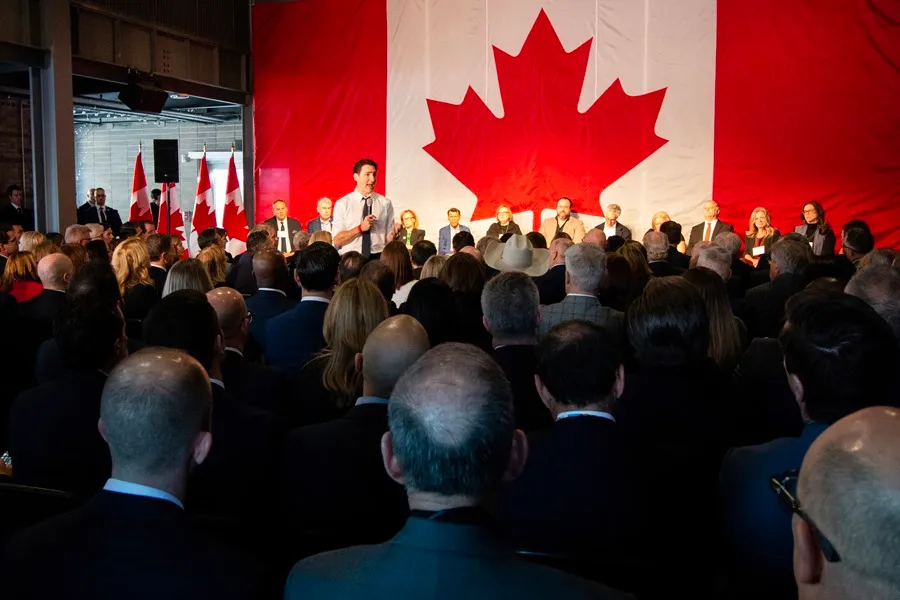
At the end of the 19th century, Canada was saved from being annexed by the United States thanks, in large part, to Spain. With Donald Trump in the White House, the threat is repeated and Canadians wonder what will happen now.
After winning the presidential election in November 2024, Trump made it clear that as soon as he reached the White House he would impose 25% tariffs on Canada.
Alarmed by the possibility of taxes that would devastate the Canadian economy, which allocates up to 70% of its exports to the neighboring country, Canadian Prime Minister Justin Trudeau traveled to Mar-a-Lago, Florida, to have dinner with the then president-elect and try to defuse the threat.
During that dinner in November 2024, Trump told Trudeau that if Canada wanted to avoid tariffs, the country would have to become the 51st state of the United States.
Since then, the Republican has repeated his interest in the annexation of Canada, even using “economic force” to bend his neighbor and ally.
The last time was last Thursday when in the Oval Office, Trump insinuated that Canada as a failed country, unable to defend itself against the threats of Russia or China.
“I think Canada is going to be a very serious candidate to be our 51st state,” Trump explained.
The idea of the US annexing Canada is not new. But for more than a century it had practically disappeared from Washington’s political vocabulary.
After snatching much of its territory from Mexico (from Texas to California) in the first half of the 19th century, in the second half, especially after the end of its civil war in 1865, the United States regularly repeated the idea of taking over the British colonies of North America, what today is Canada.
By then, the United Kingdom considered these colonies a political, economic and military burden. And in a quiet way he had practically decided that his defense was not worth it in case the United States decided to appropriate them.
Paradoxically, as Andrew Johnston, professor of History at Carleton University of Ottawa, pointed out to EFE, it was the American attempts to annex the British colonies that forced their unification in 1867 in the Canadian Confederation.
“The US’ desire to absorb Canada was what actually pushed the British Empire and the inhabitants here to organize themselves into independent colonies and later into an independent nation,” he explained.
The creation of Canada that year, and the expansion of the new country to the west (until 1871 the province of British Columbia was not incorporated into the Confederation), did not stop the American expansionist desires.
This required a change of mentality in Washington. And Spain.
As the authors Gwynne Dyer and Tina Viljoen point out in their book ‘The Defense of Canada’ by the late nineteenth century, the United States had become a more industrial country.
“The old impulse for territorial expansion was ceasing to be a central issue in American life and the new imperialism that soon replaced it was almost no threat to Canada: what Washington now wanted were overseas colonies as the European empires had,” the two authors point out.
So in April 1898, with William McKinley in the Presidency, the United States declared war on Spain and before the end of that year, Washington had its overseas possessions: Cuba, Puerto Rico, the Philippines and Guam.
Precisely McKinley is Trump’s idol, who has described him as “the king of tariffs”, for being the main driver of the legislation that at the end of the 19th century imposed tariffs of 50% on imports of goods into the United States.
That parallelism between Trump and McKinley does not escape Professor Johnston. “What Trump is expressing is something that I think has always been present in the minds of Americans, particularly after the revolution: that they have a historical mission,” he said.
But Johnston also believes that as in 1867, when the longings for annexation of the United States forced the creation of Canada, Trump’s threats will provoke another cathartic moment that has already begun with the renewed patriotism that the Canadian population has been demonstrating in recent months.
International
El Chapo’s son Joaquín Guzmán López pleads guilty to U.S. drug trafficking charges

Joaquín Guzmán López, one of the sons of notorious Mexican drug lord Joaquín “El Chapo” Guzmán, pleaded guilty on Monday to drug trafficking charges in a U.S. court, months after his brother Ovidio reached a similar plea agreement, according to local media reports.
The defendant appeared before a federal court in Chicago early Monday afternoon and changed his previous plea in the case, the Chicago Tribune reported. U.S. authorities accuse him of forming, together with his three brothers, the cartel faction known as “Los Chapitos.”
The group is believed to have continued the operations of El Chapo, who has been serving a life sentence in the United States since 2019.
Guzmán López, 39, was arrested after landing in Texas in a small aircraft alongside cartel co-founder Ismael “El Mayo” Zambada.
International
Venezuela authorizes return flights as U.S. continues deportations amid rising tensions

The arrival of U.S. aircraft carrying undocumented Venezuelan migrants continued regularly despite rising tensions between Washington and Caracas over President Donald Trump’s military deployment in the Caribbean.
Trump maintains that the deployment is part of an anti-narcotics operation, while Venezuelan President Nicolás Maduro insists the true objective is to remove him from power and seize the nation’s oil resources.
Venezuela’s aviation authority has “received a request from the United States government to resume repatriation flights for Venezuelan migrants from that country to Venezuela,” the Ministry of Transportation said in a statement .
“Under the instructions of President Nicolás Maduro, authorization has been granted for these aircraft to enter our airspace,” it added.
Caracas will permit two Eastern Airlines flights to land on Wednesday and Friday.
Migration remains one of the Trump administration’s flagship issues. On Monday, the U.S. president held a meeting with his National Security Council to discuss the situation in Venezuela, a day after confirming he had spoken with Maduro by phone, without offering further details.
According to the Venezuelan government, roughly 75 deportation flights have been carried out this year, returning at least 13,956 Venezuelans from the United States.
International
20,000 rounds stolen from german army after driver leaves cargo unattended

The German army confirmed the theft of a shipment of ammunition that occurred a week ago while it was being transported by a civilian delivery driver, a military spokesperson told AFP, confirming earlier media reports.
According to Der Spiegel and the regional broadcaster MDR, around 20,000 rounds of ammunition were stolen from an unguarded parking lot near Magdeburg, in eastern Germany, while the driver was asleep in a nearby hotel. No information has been released regarding the identity of the suspects, and the military declined to specify the exact type or amount of ammunition taken.
Authorities have also not indicated how the perpetrators knew the cargo would be left unattended.
“The theft was discovered upon delivery at the barracks,” the German army spokesperson said.
A police spokeswoman confirmed to AFP that an investigation has been opened but refused to provide further details “for tactical reasons.”
Sources close to the German military, cited by Der Spiegel, believe it is unlikely the theft was a coincidence. They suspect the thieves waited for the driver to stop for the night before striking.
Der Spiegel also reported that the Defense Ministry normally requires two drivers for this type of transport to ensure the cargo is constantly monitored. However, in this case only one driver was assigned, meaning the civilian transport company failed to comply with the security protocols.
-
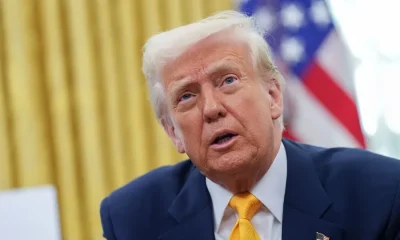
 Central America4 days ago
Central America4 days agoTrump Pardons Former Honduran President Hernández and Warns of Aid Cuts Ahead of Election
-
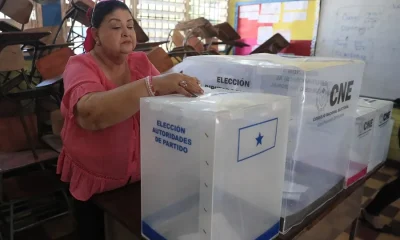
 Central America2 days ago
Central America2 days agoHonduras Extends Voting by One Hour Amid High Turnout, CNE Announces
-
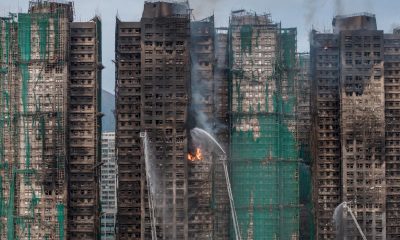
 International2 days ago
International2 days agoHong Kong police arrest 13 over deadly high-rise fire that killed 151
-

 Central America3 days ago
Central America3 days agoHonduras’ China–Taiwan Future Hinges on Sunday’s Presidential Election
-
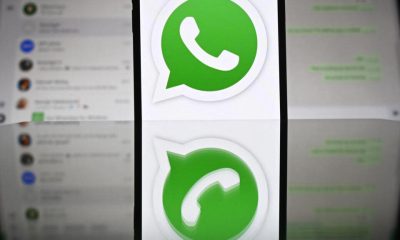
 International4 days ago
International4 days agoMeta Says Russia Seeks to Ban WhatsApp for Defending Secure Communication
-

 International2 days ago
International2 days agoSri Lanka and Indonesia deploy military as deadly asian floods kill over 1,000
-

 International2 days ago
International2 days agoTrump says asylum decision freeze will remain in place “for a long time”
-

 International2 days ago
International2 days agoChile enters runoff campaign with Kast leading and Jara seeking a last-minute comeback
-

 International19 hours ago
International19 hours ago20,000 rounds stolen from german army after driver leaves cargo unattended
-

 International19 hours ago
International19 hours agoVenezuela authorizes return flights as U.S. continues deportations amid rising tensions
-

 International18 hours ago
International18 hours agoEl Chapo’s son Joaquín Guzmán López pleads guilty to U.S. drug trafficking charges
-

 International19 hours ago
International19 hours agoTrump convenes National Security Council as U.S.–Venezuela tensions intensify






























